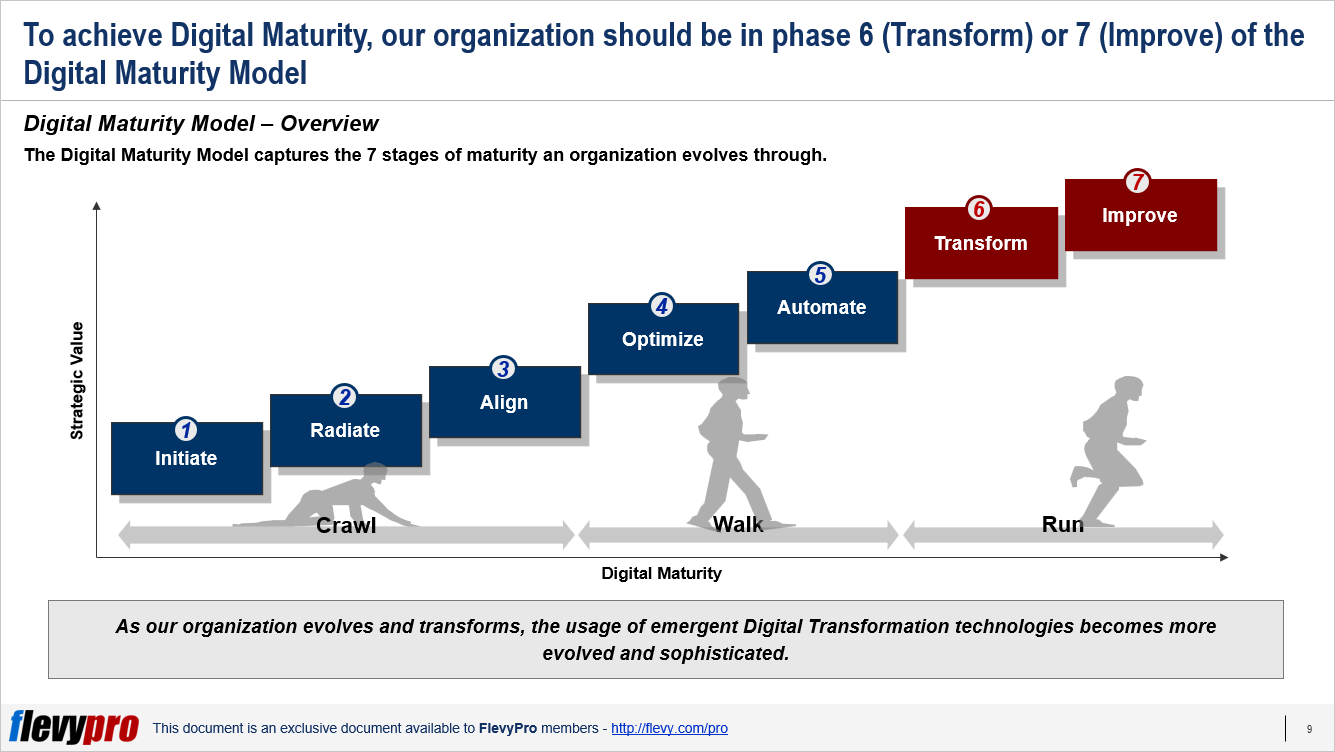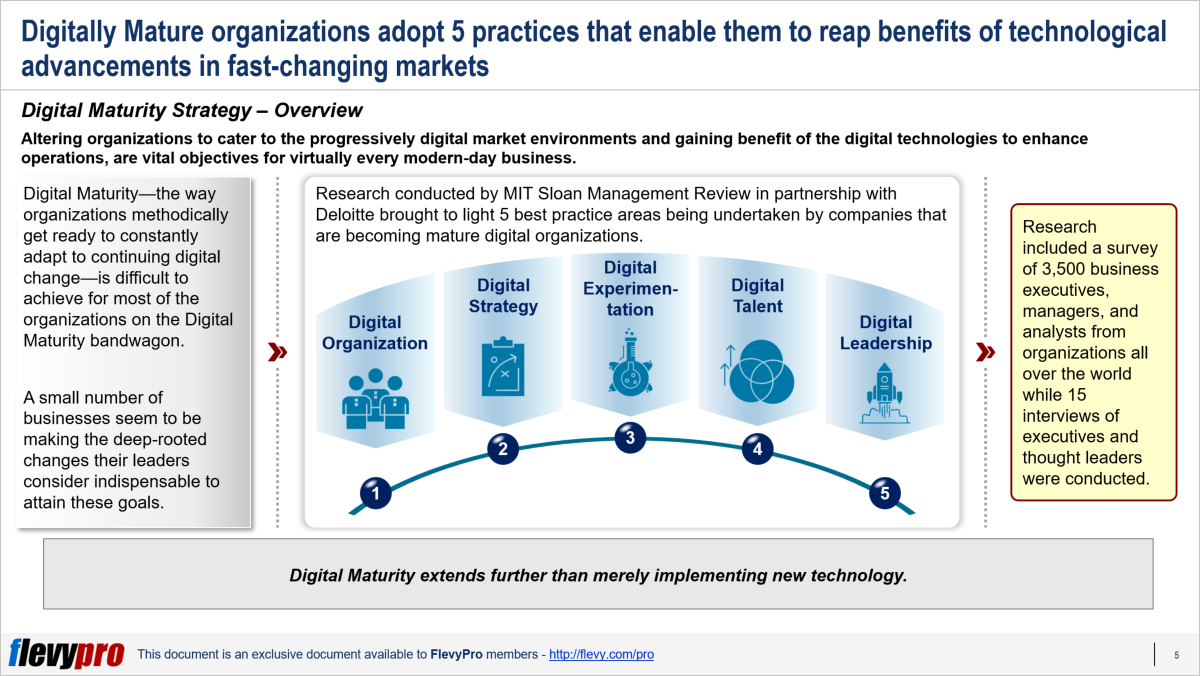Editor's Note: If you are interested in becoming an expert on Innovation Management, take a look at Flevy's Innovation Management Frameworks offering here. This is a curated collection of best practice frameworks based on the thought leadership of leading consulting firms, academics, and recognized subject matter experts. By learning and applying these concepts, you can stay ahead of the curve. Full details here.
Different organizations have responded differently to the COVID-19 pandemic. Almost all had to alter their operations in order to meet the challenges posed by the crisis.
Companies have developed Innovative strategies for marketing, service, and function within the pandemic. As a result of the COVID-19 pandemic, significant Innovation has occurred in a variety of industries.
Innovation is a difficult venture into uncharted terrain whenever it is undertaken. The Innovations brought about by firms during COVID-19 may appear to be just reactive answers to an uncommon event. Some Innovations may be a transitory trend, designed expressly for the pandemic, while others may continue to benefit the businesses and their consumers long after the outbreak has ended.
Which Innovations will endure and which should be abandoned is a difficult question.
Sustaining the creative Innovations achieved during turbulent periods such as COVID-19 in order to provide opportunities for orderly growth following the crisis requires careful consideration.
New research guides firms to acquire deeper understanding of how COVID-19 Innovations may help them emerge stronger than before.
Research has come up with a matrix for categorizing organizations according to their responses to pandemic problems. Additionally, the matrix indicates the Innovations that will endure through COVID-19 and should be invested in. The categories include:
- Adaptors
- Trailblazers
- Optimizers
- Trendsetters
Let's examine the categories in further detail.
ADAPTOR
Companies that saw short-term fluctuations in demand for products and services they already offered are placed in the Adapter quadrant of the matrix. Businesses thriving in this sector have developed the capacity to provide the same products or services with fewer resources. Changes in demand for these firms occurred prior to the outbreak of COVID-19. The anticipated length of these firms' adjustments is temporary.
Example in this category may include restaurants that introduced outdoor dining or consumer-goods corporations that increased manufacturing of disinfection to suit global demand.
TRAILBLAZER
In this quadrant are companies that employ prevailing resources to address challenges that have never been addressed before. As a result of COVID-19, alterations in customer demand took place for these businesses. It is anticipated that the adjustments would be transitory for businesses in this quadrant.
The next step for organizations in this quadrant of the matrix should thus be to identify new problems to tackle.
OPTIMIZER
Companies positioned in this quadrant have restructured their resources to meet current customer demand. Changes in demand occurred for these firms prior to COVID-19. In contrast to the previous 2 categories, changes for this category will be sustained. As a result, the next stage in the strategy of such organizations should be to boost efficiency.
TRENDSETTER
Companies positioned in the Trendsetter quadrant have responded to the COVID-19 emergency by developing entirely new goods or services that will continue to be in high demand long after the epidemic has subsided.
Interested in learning more about the 2 types of Innovation, the 3-phase approach of choosing which type to use or the 4-category matrix? You can download an editable PowerPoint on here Innovation During COVID-19 on the Flevy documents marketplace.
Want to Achieve Excellence in Innovation Management?
Gain the knowledge and develop the expertise to become an expert in Innovation Management. Our frameworks are based on the thought leadership of leading consulting firms, academics, and recognized subject matter experts. Click here for full details.
To be competitive and sustain growth, we need to constantly develop new products, services, processes, technologies, and business models. In other words, we need to constantly innovate.
Ironically, the more we grow, the harder it becomes to innovate. Large organizations tend to be far better executors than they are innovators. To effectively manage the Innovation process, we need to master both the art and science of Innovation. Only then can we leverage Innovation as a Competitive Advantage, instead of viewing Innovation as a potential disruptive threat.
Learn about our Innovation Management Best Practice Frameworks here.
Do You Find Value in This Framework?
You can download in-depth presentations on this and hundreds of similar business frameworks from the FlevyPro Library. FlevyPro is trusted and utilized by 1000s of management consultants and corporate executives. Here’s what some have to say:
“My FlevyPro subscription provides me with the most popular frameworks and decks in demand in today’s market. They not only augment my existing consulting and coaching offerings and delivery, but also keep me abreast of the latest trends, inspire new products and service offerings for my practice, and educate me in a fraction of the time and money of other solutions. I strongly recommend FlevyPro to any consultant serious about success.”
– Bill Branson, Founder at Strategic Business Architects
“As a niche strategic consulting firm, Flevy and FlevyPro frameworks and documents are an on-going reference to help us structure our findings and recommendations to our clients as well as improve their clarity, strength, and visual power. For us, it is an invaluable resource to increase our impact and value.”
– David Coloma, Consulting Area Manager at Cynertia Consulting
“FlevyPro has been a brilliant resource for me, as an independent growth consultant, to access a vast knowledge bank of presentations to support my work with clients. In terms of RoI, the value I received from the very first presentation I downloaded paid for my subscription many times over! The quality of the decks available allows me to punch way above my weight – it’s like having the resources of a Big 4 consultancy at your fingertips at a microscopic fraction of the overhead.”
– Roderick Cameron, Founding Partner at SGFE Ltd


